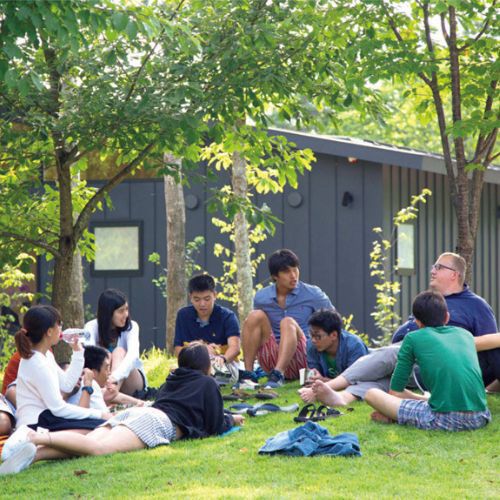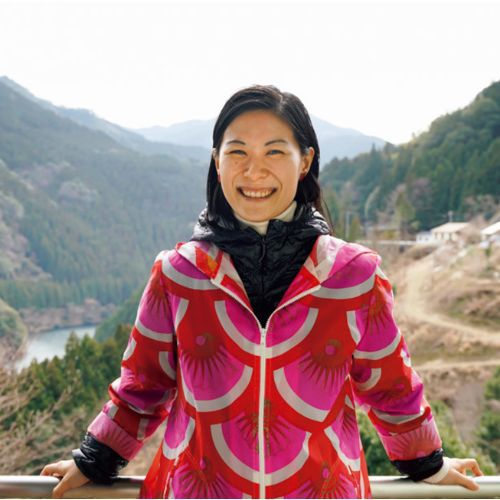Suzanne Ross is Japan’s unofficial ambassador for urushi. Her beautiful works and strong message grab hearts both in Japan and overseas.
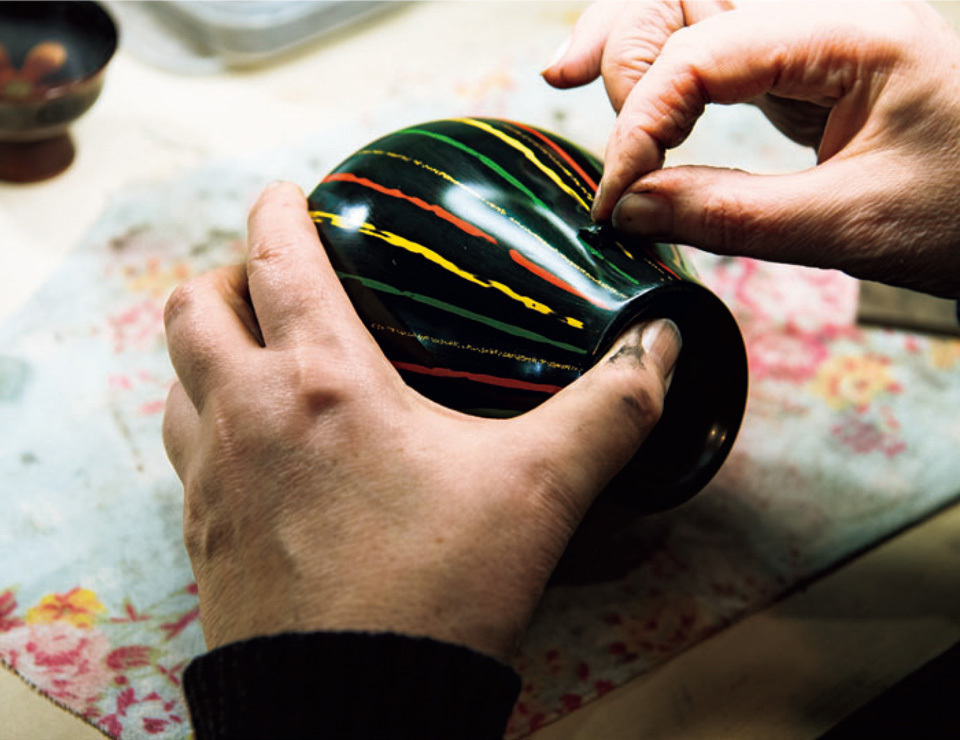
Ross creates two types of bowls: original and traditional. “In my original pieces, I explore modern ways to bring out the best of urushi, while my traditional pieces keep the traditional skills alive,” she explains.
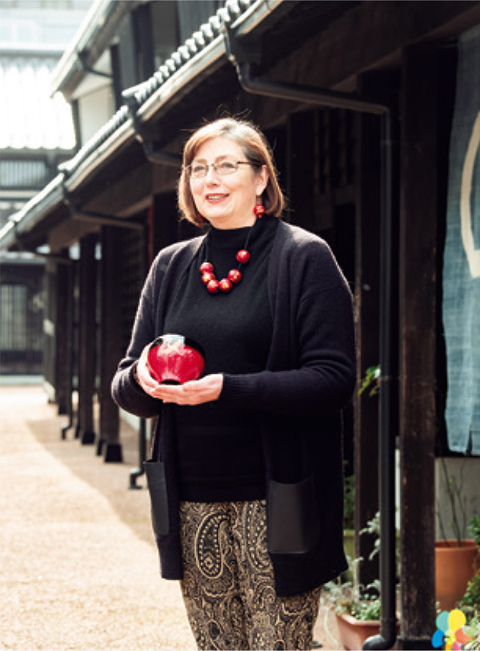
“Today, I want you to learn a new word. That word is urushi.”
Suzanne Ross always begins her overseas lectures this way. The word “urushi” refers to both the tree (Toxicodendron vernicifluum) and its sap, which is used as a coating material that becomes strong and glossy when hardened. Due to its adhesive, preservative and, of course, aesthetic qualities, it’s been part of daily life in Japan since ancient times. Nowadays, urushi is also the generic name used to describe all wooden products coated with it. Some other Asian countries also use it, but with items made in Japan over 9,000 years ago being the oldest in the world,[1] Japan’s use is special. Also used for restoration of national treasures, urushi is one of Japan’s important traditional cultures.
While still an art-school student in London, 19-year-old Ross visited an exhibition at the Royal Academy of Arts and fell in love with a deep black and beautifully inlaid urushi inkstone box. “I want to study urushi!” an inspired Ross resolved, and she left for Japan on a one-way ticket. “I naively thought I would master it in about three months and return to England,” she recalls, but the unfathomable depths of urushi have been captivating her for more than 35 years. Among Japan’s urushi production regions, Wajima City, where Ross has studios and a gallery, has a reputation for the highest quality pieces, which are called the “Urushi no Jo-oh (Queen of Urushi).”
Wajima is home to Ishikawa Prefectural Wajima Institute of Lacquer Arts, where grand masters impart the art to the next generation. Ross, a four-time graduate of the school recalls, “It was amazing to learn from national living treasures, who not only taught techniques, but also motivated us.” Due to urushi’s many complex processes, students normally choose to specialize, but Ross studied everything—an amazing feat for one person. This achievement empowered her to break out from stereotypical concepts of tradition and create original urushi of contemporary relevance.
“This urushi accessory is one of my contemporary works. Each bead expresses a different quality: matte, shiny, and textured.” Other examples are a bowl decorated with lace soaked in urushi, and a plate appearing metallic because of silver powder sprinkled over the urushi, a technique called maki-e. “Urushi’s range of expression is infinite,” says Ross.
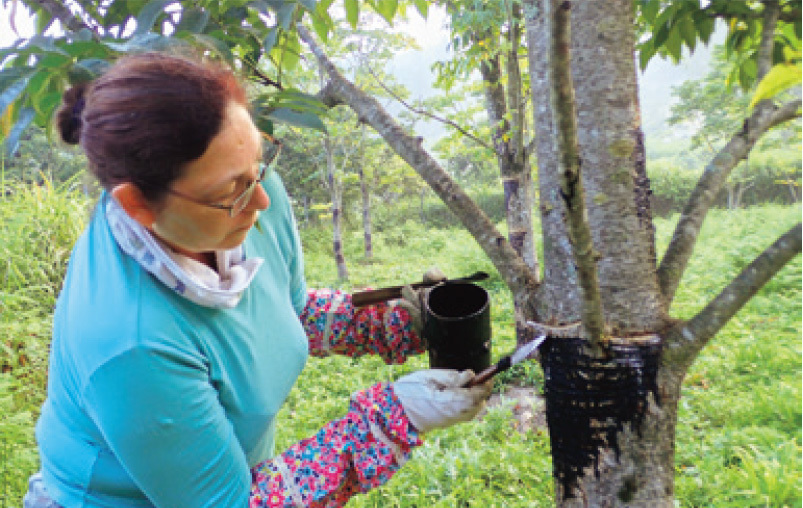
The sap is extruded one drop at a time by cutting grooves into the tree. Apparently, only trees grown in Japan produce urushi that can withstand its climate.
“Urushi is translated as lacquerware in English, but I disagree. Urushi is far superior to anything synthetic. It is light, strong and exudes elegance. Anyone who uses urushi tableware once, is instantly hooked. There is no going back to plastic tableware after that. Extracted from a single species of tree, urushi is all natural. So, instead of ‘lacquerware,’ I call it ‘urushi’ to convey its uniqueness and to distinguish it from synthetic products.”
For the sake of urushi, Ross channels all energies into her activities as an artist, and into her lectures and workshops both in Japan and abroad. This year, she and fellow urushi kindred spirits are launching an urushi NPO to link up all the production regions and present a unified “Japanese urushi” to the world. “Although it all comes from the same plant, it differs so much by region and by artist. I think “Japanese urushi” would best be presented to the world as a combined force, and information on it should be shared in English worldwide.” She also challenges issues currently facing urushi are a shortage of artists and toolmakers inheriting the traditions and a dwindling supply of trees and the skilled craftsmen to tap them. “I want to spread the virtues of urushi to the world, so people buy it, use it, support it and want to study it. We must first protect the trees—if there is no sap, it’s all over.”
Ross believes in telling others about the good things in life. “Urushi is beautiful and versatile. If it disappears, the world loses a great treasure, forever.” Urushi lured her from London to faraway Japan. We cannot allow its shine to fade into history.
[1] According to Hokkaido Government’s official website (in Japanese)
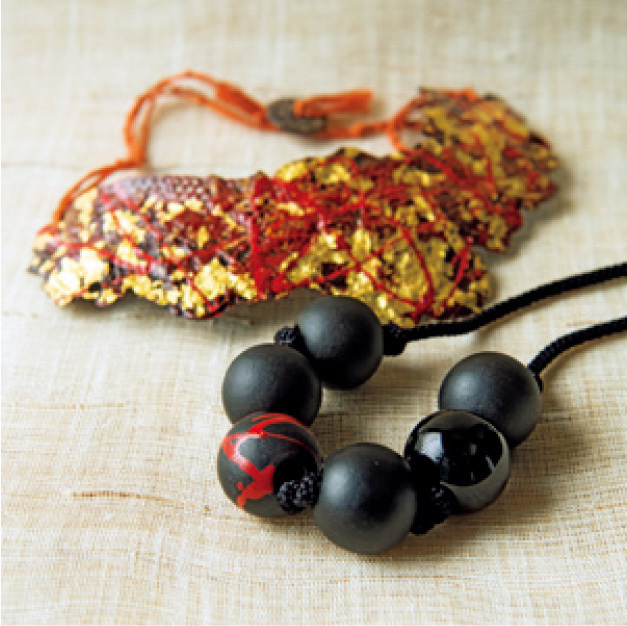
Ross’s line of accessories allows the wearer to truly discover urushi’s virtues.
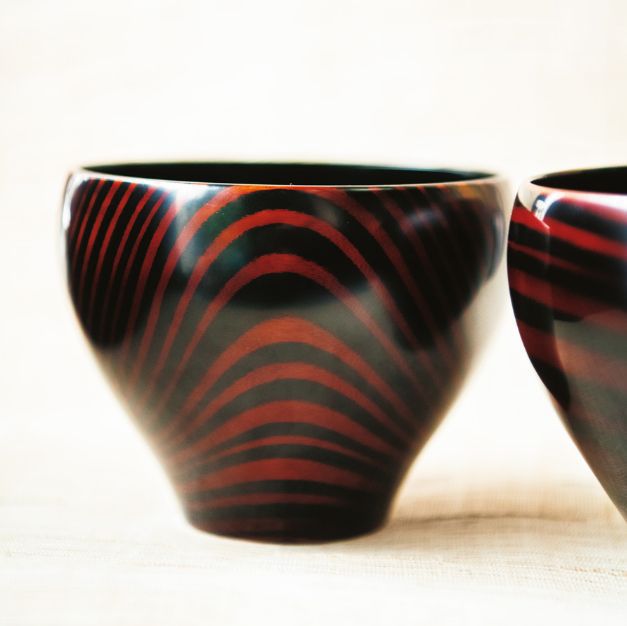
Wooden bowls coated with urushi highlighting the grain exude an all-natural one-of-a-kind feel.

Suzanne Ross
Born in London, United Kingdom, she arrived in Japan in 1984. As an urushi artist, she departs from traditional styles to create original pieces inspired by Japan’s natural beauty. At Wajima Kobo Nagaya, in central Wajima, one can view her pieces and some of her work processes.




























